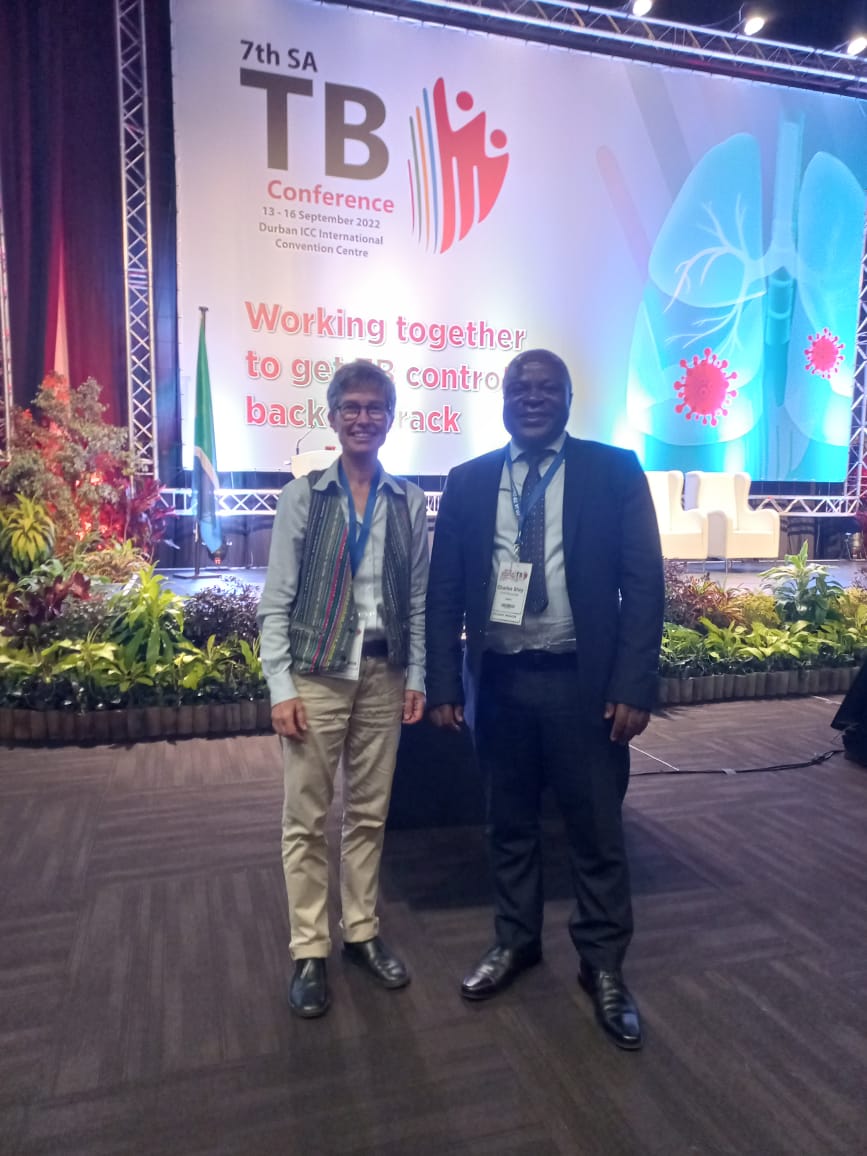The 7th South African TB conference was held from the 13 – 16th September at the Durban ICC International Convention Centre. This meeting aimed at addressing a critical juncture in TB control as a result of the COVID-19 epidemic that has been devastating after declines in global TB mortality over decades - an increase in TB deaths was suddenly shown in 2020.
In South Africa, numerous groups have reported poor access to TB control measures during the COVID-19 epidemic. As TB is a disease that manifests slowly, there is still much to learn in terms of tallying the cost and full impact of the pandemic. The conference brought together diverse stakeholders from civil society, government, the non-governmental sector, academia, and other domains. An exciting programme was devised where each plenary purposefully covered diverse aspects of TB control, allow learning and engagement in a wide array of topics. Further, in-person interaction was facilitated to foster working together towards impactful steps going forward.
The SAMRC’s Prof Charles Shey Wiysonge (Senior Director Cochrane, South Africa and HIV and other infectious Diseases Research Unit) was an invited speaker, and his plenary address was on the topic “Vaccine Hesitancy: What to do when we have a TB vaccine?”. Prof Wiysonge said “vaccines are one of the greatest public health achievements in human history. However, vaccines only have a public health impact when people take them. Numerous barriers could reduce vaccine uptake, ranging from the logistics of ensuring access and affordability to psycho-social factors such as vaccine hesitancy. The latter refers to the motivational state of being conflicted about or opposed to vaccination. It is a complex and dynamic process embedded in the wider social worlds in which people live, and reflects multiple webs of influence, meaning, and logic.”
Prof Wiysonge added that through vaccination choices, people are often communicating not just what they think about vaccines but also who they are, what they value, and with whom they identify and that by understanding and appreciating people’s social worlds and values, and the logics around vaccination that these give rise to, could provide avenues for reducing vaccine hesitancy and increasing vaccine uptake. “Therefore, addressing vaccine hesitancy requires listening proactively, understanding the drivers of vaccine hesitancy, and engaging with tailored strategies” concluded Prof Wiysonge.
Also presenting at the conference was HIDRU’s Dr Marian Loveday – Specialist Scientist, speaking on the topic - Including pregnant women/people in efforts to get TB back on track: Development of an international “best practices” guide.” This field guide is being launched at the conference. It was put together to guide the management of pregnant and postpartum women with drug resistant tuberculosis (DR-TB). Dr Loveday said that due to the lack of information available at a PHC level, healthcare workers are fearful of DR-TB and pregnant and postpartum women with DR-TB who are subjected to discriminatory infection control practices and inferior treatment regimens. Seventeen representatives from all the WHO regions of the world worked together reviewing the evidence available to inform best practices.
Ms Thabile Mthethwa, a research assistant at HIDRU, had a poster at the conference reporting her work on a community-based screening and linkage to care project. In this project the household contacts (HHCs) of both TB and diabetes index patients were screened for TB. The proportion of HHCs of diabetes index patients who tested positive for TB was slightly higher than the proportion of HHCs of TB index patients, 21/2151 (4%) and 10/1007 (1%), respectively.
TB is still a major health crisis in the country and responsible for approximately 61,000 deaths annually. Civil society, policy makers, managers, healthcare workers, and researchers need to work together to address this disease which can be diagnosed, treated, and cured.
It is critical that we get TB control back on track now!

